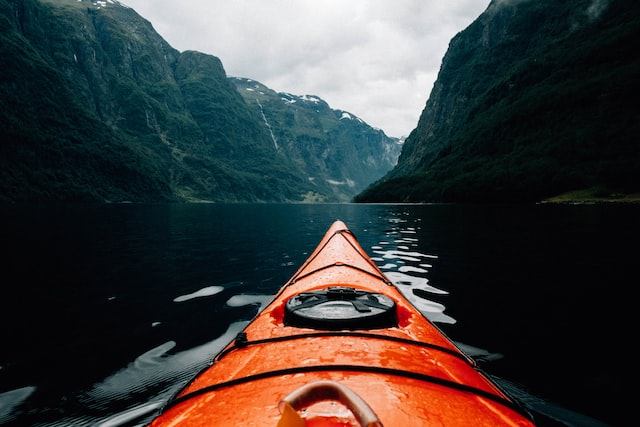For the better part of the last 20 years kayaking has been one of the most popular as well as fastest growing outdoor activities out there. As a paddlesport, kayaking is clearly the genre of choice. Yet, there is a new kid on the block, namely standup paddleboarding. The rise in popularity of SUPing has caused many die-hard kayakers to consider picking up paddleboarding as a sport. Some are even looking to replace their kayaking with paddleboarding. Yet others are skeptical that paddleboarding will ever unseat kayaking as their crown sport.
Rather than looking at paddleboarding as replacing kayaking, it should be viewed as a complement to it. There are times when a paddleboard is preferable to a kayak. There are other situations when paddling a kayak is the right tool for the trade. Here is a list of reasons why you would want to kayak instead of standup paddleboard.
Kayak When You Need to Take Gear
It is no surprise that you can’t carry much on a paddleboard. Sure you can paddleboard while wearing a backpack with a limited number of supplies in it. You’ll even find SUPs with rigging to hold gear, but if you need to carry more supplies, a kayak is clearly superior with all of its hatches and dry storage in the boat.
Wind Really Slows Down Paddleboards
Kayaks have a clear advantage in the wind. This is for two reasons. First, your body on a standup paddleboard is completely exposed which will serve as a sail as it catches all the wind. When you are in a kayak you are much lower to the water which means you’ll catch less wind and experience less drag. The second reason that kayaks are better than SUPs in the wind is related to the paddle and paddling technique. Since kayak paddles have two blades, your kayaking strokes are much closer together than are SUP strokes and you don’t have to switch sides with a kayak paddle. This will greatly aid your paddling into the wind which slows the vessel down in between strokes.
Kayaks are Better Suited to Chop, Surf, and Waves
Kayaks are much more controllable in adverse water conditions than are standup paddleboards. While it is true that paddleboards can be surfed, they just don’t handle well in chop and waves nor are they stable in such. Kayaks of course, cruise right over and through them.
Kayak When there’s Swift Current
Similar to wind, when paddling against the current, it really does help to have a kayak paddle and to be closer to the water. This will help with stroke speed and reduce the amount of time your paddle is out of the water. Also, kayaks have a rudder that can be employed.
When Speed is a Consideration
Also related to the double-bladed paddle, kayaking is faster and therefore should be the choice when speed is a concern.
When You Need to Paddle a Distance
While standup paddleboards have been paddled a long distance, in general kayaks do much better over long distances and some would say they are more comfortable to paddle due to sitting down versus standing up.
Kayak Rather Than Paddleboard When Stability is a Concern
If tipping is a real concern due to the potential for harm should you go over, then kayaks are the vessel of choice. So if you’re worried about alligators, sharks, sharp oyster beds, cold water, or polluted water stick to your kayak.
Kayak Instead of Paddleboard When its Cold Out
If its cold out you’ll be much warmer in your decked kayak than being completely exposed on your standup paddleboard.
Kayak When the Water’s Cold
Of course, paddlers will get somewhat wet regardless of the type of watercraft that they paddle. However, decked kayaks with sray skirts are a much dryer paddle than are standup paddleboards. Also, dry tops and paddling jackets are much more effective when worn in conjunction with a kayak. If the water temp is too cold, you’ll want to be in a kayak.

